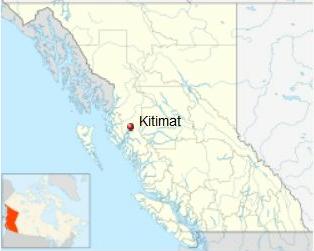BC Town Blocks All-Canada Pipeline as Keystone XL Delayed
OTTAWA, Ontario, Canada, April 28, 2014 (ENS) – As Alberta’s new Premier Dave Hancock met with Prime Minister Stephen Harper in Ottawa today, the two leaders agreed that they cannot push the controversial Keystone XL oil sands pipeline any closer to approval by the Obama Administration at this time.
The latest U.S. delay in the permitting process has made it necessary to focus on all-Canadian ways to move product from the Alberta oil sands to market, said the Conservative leaders.
Ten days after the U.S. State Department announced another delay in the permitting process for the 1,900-kilometer pipeline from northern Alberta to Nebraska, Hancock told the “Edmonton Journal” that the province is shifting its attention to pipelines and processes over which it has more control.
“It’s not dead,” Hancock said in an interview with the Journal after the meeting Monday. “There’s still optimism that [Keystone] will go ahead. The pessimism is around timing – whether we’ll see it by the end of this administration. Nobody thinks we’ll see it before the mid-term elections,” coming up this November.
The U.S. State Department said April 18 that the eight federal agencies that must weigh in on TransCanada’s proposed Keystone XL pipeline need additional time due to the uncertainty created by “on-going litigation in the Nebraska Supreme Court which could ultimately affect the pipeline route in that state.” The State Department also said it needs more time to review the 2.5 million comments submitted by the public.
But all-Canada pipeline plans are also running into trouble.
The British Columbia coastal city of Kitimat Friday officially rejected the Enbridge Northern Gateway pipeline proposal to move diluted bitumen from the Alberta oil sands through a proposed port facility that would be built there.
If Enbridge’s C$6.5 billion Northern Gateway plan is approved, the tarry slurry would travel down a pipeline to Kitimat where supertankers would take it out to the Pacific Ocean through the narrow Douglas Channel to markets in Asia.

Douglas Channel as seen from Kitimat, British Columbia (Photo by John Chappy)
The 4-1 Kitimat Council vote reflected the opinion of Kitimat residents, who voted against the Northern Gateway Pipeline in a plebiscite held on April 12.
With a 62 percent voter turnout, 1,793 opposed the project as against 1,278 who supported it – a margin of 58.4 percent to 41.6 percent.
“The people have spoken. That’s what we wanted – it’s a democratic process,” said Mayor Joanne Monaghan in a statement.
The plebiscite question was, “Do you support the final report recommendations of the Joint Review Panel of the Canadian Environmental Assessment Agency and National Energy Board, that the Enbridge Northern Gateway project be approved, subject to 209 conditions set out in Volume 2 of the JRP’s final report?”
The division is a familiar one – opponents warn of the environmental risk to some of the world’s most vital salmon-bearing waterways as supertankers traverse the narrow channel.
Northern Gateway proponents say the small town needs the jobs and revenue that would flow from the development.
Enbridge, an energy delivery giant based in Calgary, says 70 percent of the route utilizes previously disturbed lands such as old forestry roads and previously logged cut blocks. The company is trying to assure that public that the Douglas Channel passage would be safe.
Writing in the “Vancouver Sun” last June, Captain Stephen Brown, president of the Chamber of Shipping of British Columbia, declared, “In the view of the marine industry, the Douglas Channel, which is 1,575 metres across at its narrowest point, is safe for tanker transit. By contrast, the Bosphorus Strait, which connects the Black Sea with the Sea of Marmara, has around 50,000 vessel transits a year (including 8,000 tankers) through a winding passage that is 698 metres across at its narrowest point.”
But the local nonprofit group Dogwood Initiative, which helped to convince Kitimat voters that the environmental risks of the Northern Gateway pipeline are too great, is not persuaded.
Dogwood Initiative is sponsoring a petition for a citizens’ initiative to give all British Columbians the chance to vote on plans to expand oil pipelines and tanker traffic on the coast.
Copyright Environment News Service (ENS) 2014. All rights reserved.
http://ens-newswire.com/2014/04/28/bc-town-blocks-all-canada-pipeline-as-keystone-xl-delayed/


